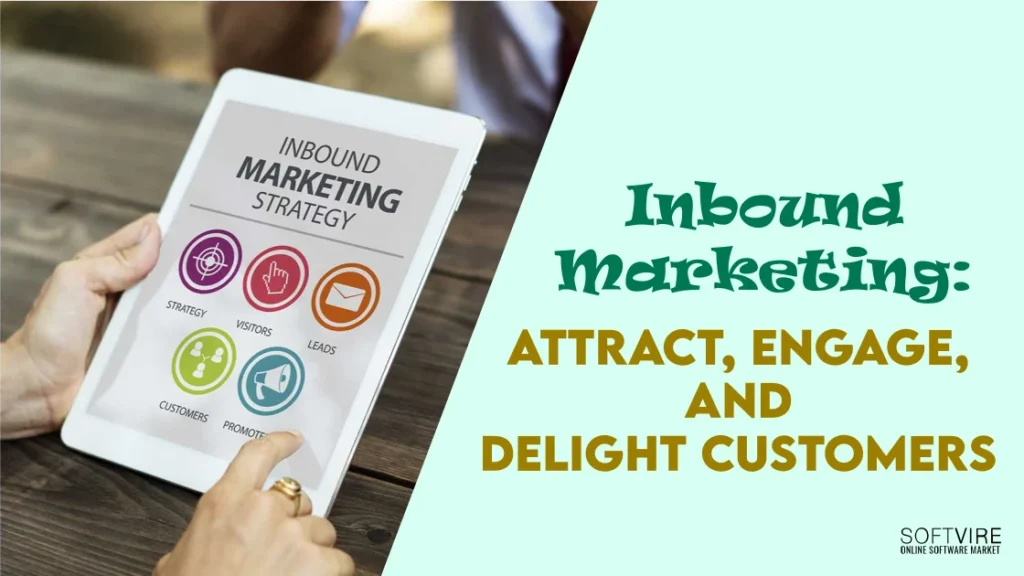I. Introduction
A. Definition of inbound marketing
Inbound marketing is a customer-centric approach focusing on attracting and engaging customers through valuable content, personalized communication, and exceptional experiences. It involves creating and sharing relevant content, optimizing for search engines, utilizing social media, and nurturing leads to build strong relationships and delight customers. Inbound marketing aims to attract, engage, and convert prospects into loyal customers by providing them with meaningful interactions and valuable information at every stage of their buyer’s journey.
B. Importance of attracting, engaging, and delighting customers
Inbound marketing is a customer-centric strategy focusing on obtaining, converting, and retaining customers. Engaging and delighting customers through valuable content, personalized communication, and exceptional service.
Unlike traditional outbound marketing strategies that interrupt potential customers with intrusive advertisements, inbound marketing aims to provide relevant and helpful information to a target audience, earning their trust and building long-term relationships.
Companies can develop a strong inbound marketing strategy by following the three critical stages of attracting, engaging, and delighting customers.
II. Attracting Customers
A. Understanding the target audience
1. Creating buyer personas
2. Conducting market research
B. Content creation and optimization
1. Developing valuable and relevant content
2. Utilizing SEO techniques
3. Leveraging social media platforms
C. Implementing lead generation strategies
1. Creating compelling offers
2. Designing landing pages and forms
3. Using email marketing campaigns
To attract customers effectively, it is crucial to understand the target audience. Creating buyer personas helps identify their demographics, interests, and pain points. Conducting market research provides valuable insights into customer preferences and industry trends.
Content creation and optimization play a vital role in attracting customers. Developing valuable and relevant content positions the business as an authority in the industry while utilizing SEO techniques ensures that the content is discoverable by search engines.
Leveraging social media platforms helps to reach a wider audience and engage with potential customers. Implementing lead generation strategies, such as creating compelling offers, designing engaging landing pages and forms, and utilizing email marketing campaigns, enables businesses to capture contact information and nurture leads.
III. Engaging Customers
A. Building strong relationships
1. Utilizing personalized communication
2. Implementing marketing automation
B. Nurturing leads
1. Developing targeted email campaigns
2. Providing relevant educational content
C. Utilizing social media engagement
1. Responding to comments and messages
2. Hosting live chats and Q&A sessions
Engaging customers is essential for building long-term relationships. Personalized communication helps businesses connect with customers more profoundly, addressing their specific needs and preferences. Implementing marketing automation enables businesses to deliver timely and relevant content to customers, enhancing engagement and reducing manual effort.
Nurturing leads through targeted email campaigns and providing relevant educational content establishes trust and positions the business as a helpful resource. Utilizing social media engagement by promptly responding to comments and messages and hosting live chats and Q&A sessions fosters community and strengthens customer relationships.
IV. Delighting Customers
A. Providing exceptional customer service
1. Active listening and responsiveness
2. Quick resolution of customer issues
B. Encouraging customer feedback and reviews
1. Requesting testimonials and reviews
2. Monitoring online reputation
C. Upselling and cross-selling opportunities
1. Identifying additional customer needs
2. Offering relevant products or services
Delighting customers is a crucial aspect of inbound marketing. Providing exceptional customer service through active listening, responsiveness, and empathy enhances the customer experience. Resolving customer issues promptly and efficiently builds trust and loyalty.
Encouraging customer feedback and reviews is essential for gathering testimonials and online reviews that can be used to attract new customers. Monitoring online reputation helps businesses address any negative feedback or concerns proactively.
Identifying additional customer needs and offering relevant upselling or cross-selling opportunities showcases the business’s commitment to satisfying consumer needs and bringing value to their experience.
VI. Implementing an Inbound Marketing Strategy
A. Setting goals and objectives
1. Defining measurable goals for attracting, engaging, and delighting customers
2. Aligning goals with overall business objectives
B. Developing a content strategy
1. Identifying relevant topics and themes
2. Planning a content calendar
3. Creating a mix of formats (blog posts, videos, infographics, etc.)
4. Ensuring consistency and quality in content production
C. Optimizing content for search engines
1. Conducting keyword research
2. Incorporating keywords naturally into the content
3. Optimizing meta tags and descriptions
4. Building backlinks and improving website authority
D. Utilizing social media channels
1. Selecting the most relevant social media platforms for the target audience
2. Creating engaging and shareable content
3. Building a community and fostering user-generated content
4. Monitoring social media analytics and adjusting strategies accordingly
E. Implementing lead generation tactics
1. Creating compelling calls-to-action (CTAs)
2. Designing landing pages and forms for lead capture
3. Implementing lead nurturing workflows
4. Incorporating marketing automation tools to streamline lead management
F. Personalizing communication and customer journeys
1. Segmenting the audience based on demographics, behaviors, and interests
2. Customizing email marketing campaigns and content recommendations
3. Utilizing personalization tokens and dynamic content
4. Continuously optimizing and testing personalized approaches
G. Monitoring and analyzing performance
1. Tracking website traffic, conversion rates, and lead generation metrics
2. Analyzing engagement levels and customer behavior
3. Utilizing analytics tools to gain insights and make data-driven decisions
4. Conducting A/B testing to optimize marketing campaigns
VII. Overcoming Challenges and Best Practices
A. Overcoming content saturation
1. Focusing on unique value propositions and differentiation
2. Conducting competitor analysis and identifying content gaps
3. Leveraging storytelling and creativity to engage audiences
B. Adapting to evolving algorithms and SEO practices
1. Staying updated with search engine algorithm changes
2. Prioritizing user experience and mobile optimization
3. Building authoritative backlinks and maintaining a solid website structure
C. Building trust and credibility
1. Showcasing expertise through thought leadership content
2. Incorporating social proof through testimonials and case studies
3. Engaging with influencers and industry experts for endorsements
D. Providing exceptional customer experiences
1. Training customer service teams to deliver outstanding support
2. Implementing feedback loops to collect and act upon customer feedback
3. Personalizing post-purchase interactions and surprise-and-delight initiatives
E. Continuous improvement and optimization
1. We are regularly reviewing and refining marketing strategies.
2. Analyzing customer feedback and adjusting tactics accordingly
3. Experimenting with new channels and emerging trends
Conclusion
Implementing an inbound marketing strategy centered around attracting, engaging, and delighting customers requires careful planning, consistent execution, and continuous improvement. Businesses can contact their target audience more effectively and nurture relationships by setting clear goals, developing a robust content strategy, optimizing for search engines, leveraging social media, and utilizing lead-generation tactics.
Overcoming challenges and adopting best practices such as overcoming content saturation, adapting to evolving algorithms, building trust, and providing exceptional customer experiences are vital for success. With a customer-centric approach and a commitment to continuous improvement, businesses can unlock the full potential of inbound marketing and achieve long-term growth and customer loyalty.
Are you looking for online learning tools and discounted Microsoft products? Check out our hot offers at Microsoft Softvire Australia. Upgrade to Windows 11 and join millions of users enjoying the latest advancements in operating system technology.



